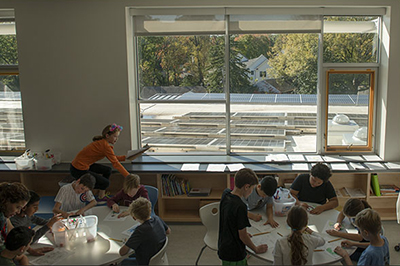Views
Views
Unrestricted Views (UV)
Classroom windows without obstructions.
From the supporting literature (linked above), an unrestricted view of nature (mountain, wildlife, fountain and greenery spaces, but not walls and parking lots) should be provided for classrooms.
View of Natures (VN)
View of Outdoor natural spaces such as gardens, wildlife, water features, and the sky.
From the supporting literature (linked),
1. Nature exposure positively influence student performance and well-being.
2. Natural window views has an influence on stress recovery.
3. Students in learning spaces that have a view to natural surroundings are motivated to learn, and they have higher retaining rate.
Distant View (DV)
Window views that allow students to easily see at least 50 feet outdoors.
References
1. Ariani, M. G., & Mirdad, F. (2015). The Effect of School Design on Student Performance. International Education Studies, 9(1), 175.
2. Chen, C. (2015). Impact of nature window view on high school students stress recovery.
3. Farley, K. M. J; Veitch, J. A (2001). “A Room With A View: A Review of the Effects of Windows on Work and Well-Being”. NRC Institute for Research in Construction, Canada, 136.
4. Matsuoka, R. H. (2010). Student performance and high school landscapes: Examining the links. Landscape and urban planning, 97(4), 273-282.
5. Tanner, C. K. (2008). Explaining relationships among student outcomes and the school’s physical environment. Journal of Advanced Academics, 19(3), 444-471.
6. Tanner, C. K. (2009). Effects of school design on student outcomes. Journal of Educational Administration, 47(3), 381-399.
7. Tanner, C. K. (2013). A case for schoolhouse aesthetics. Educational Planning, 21(1), 32-38.







